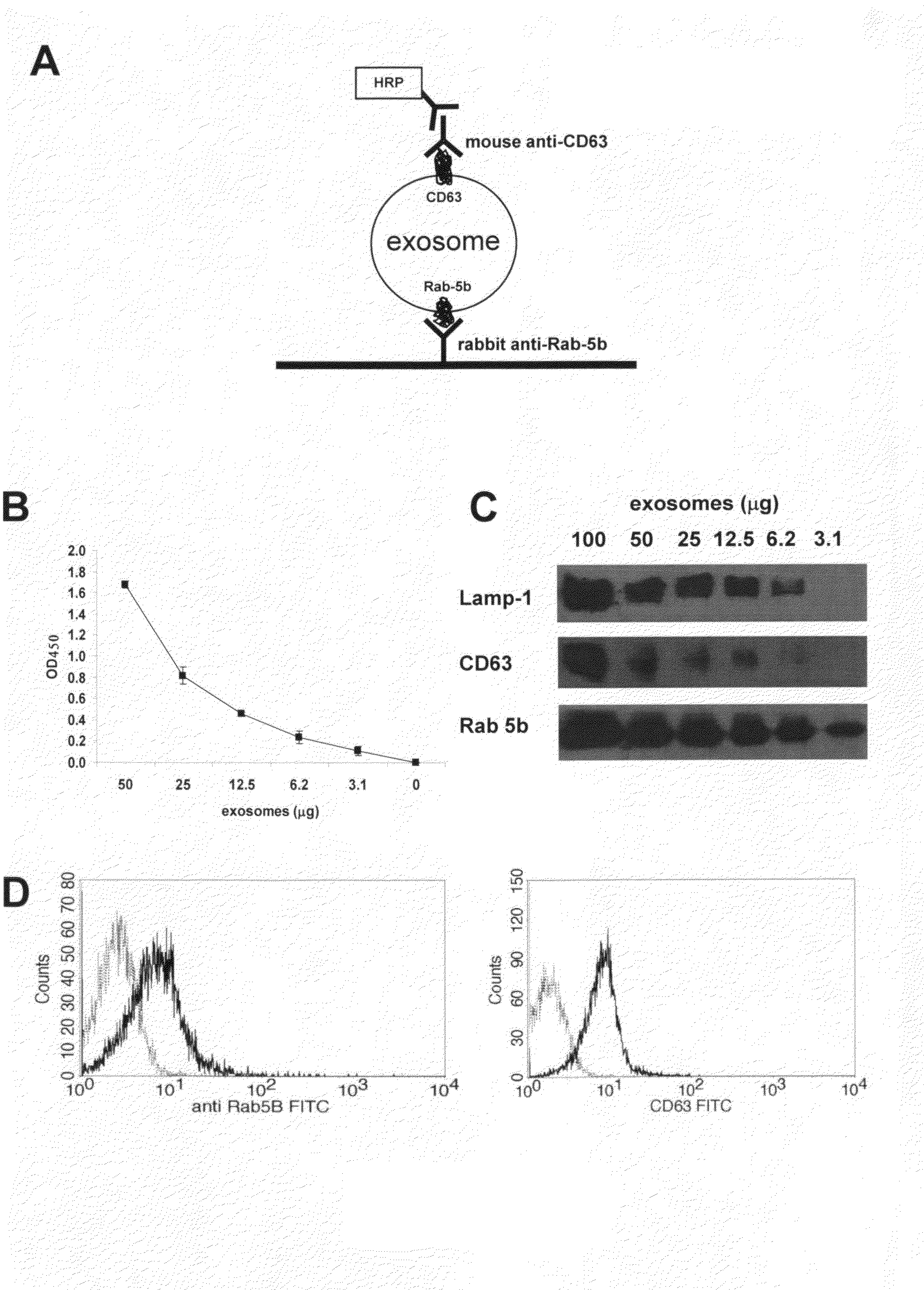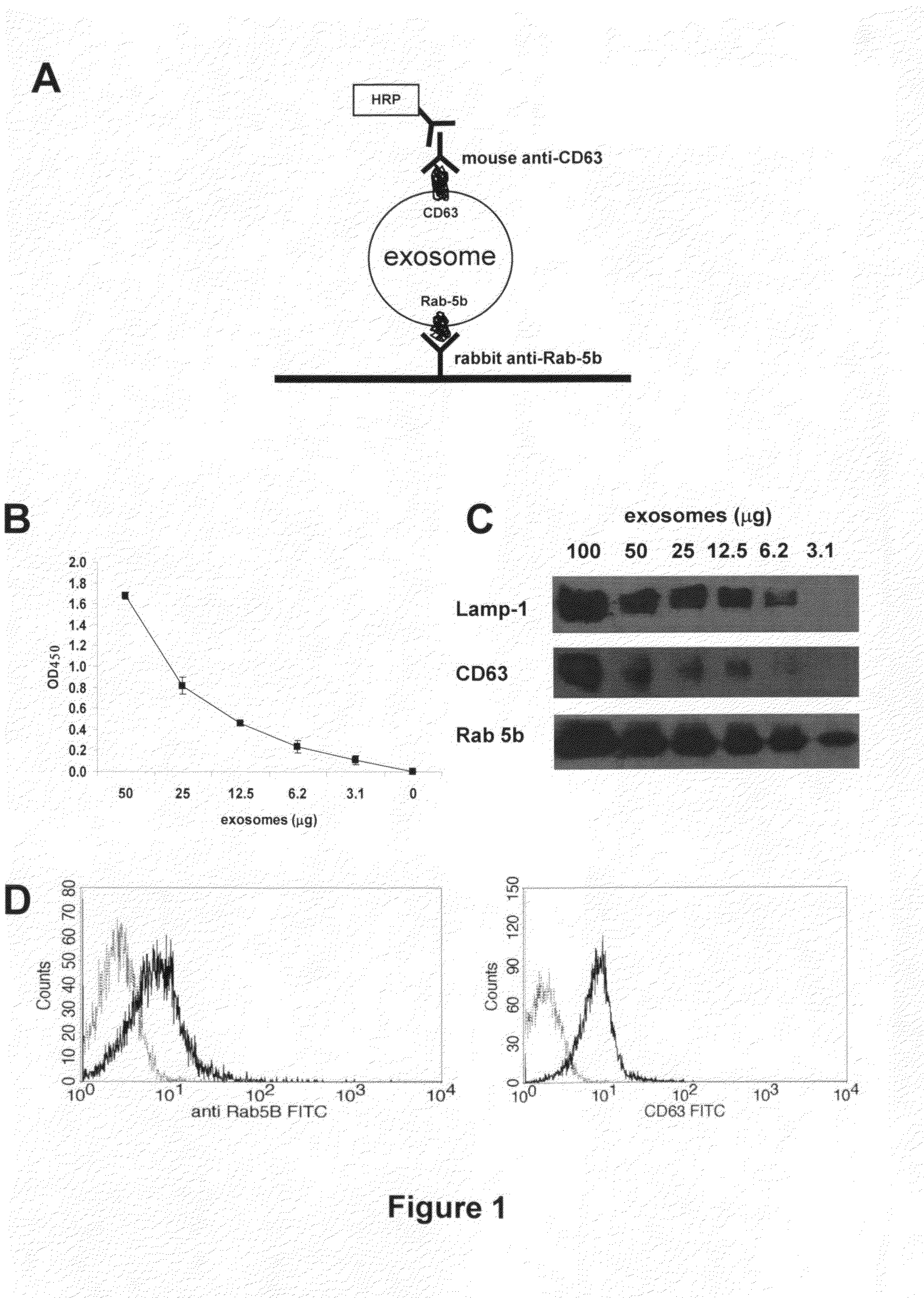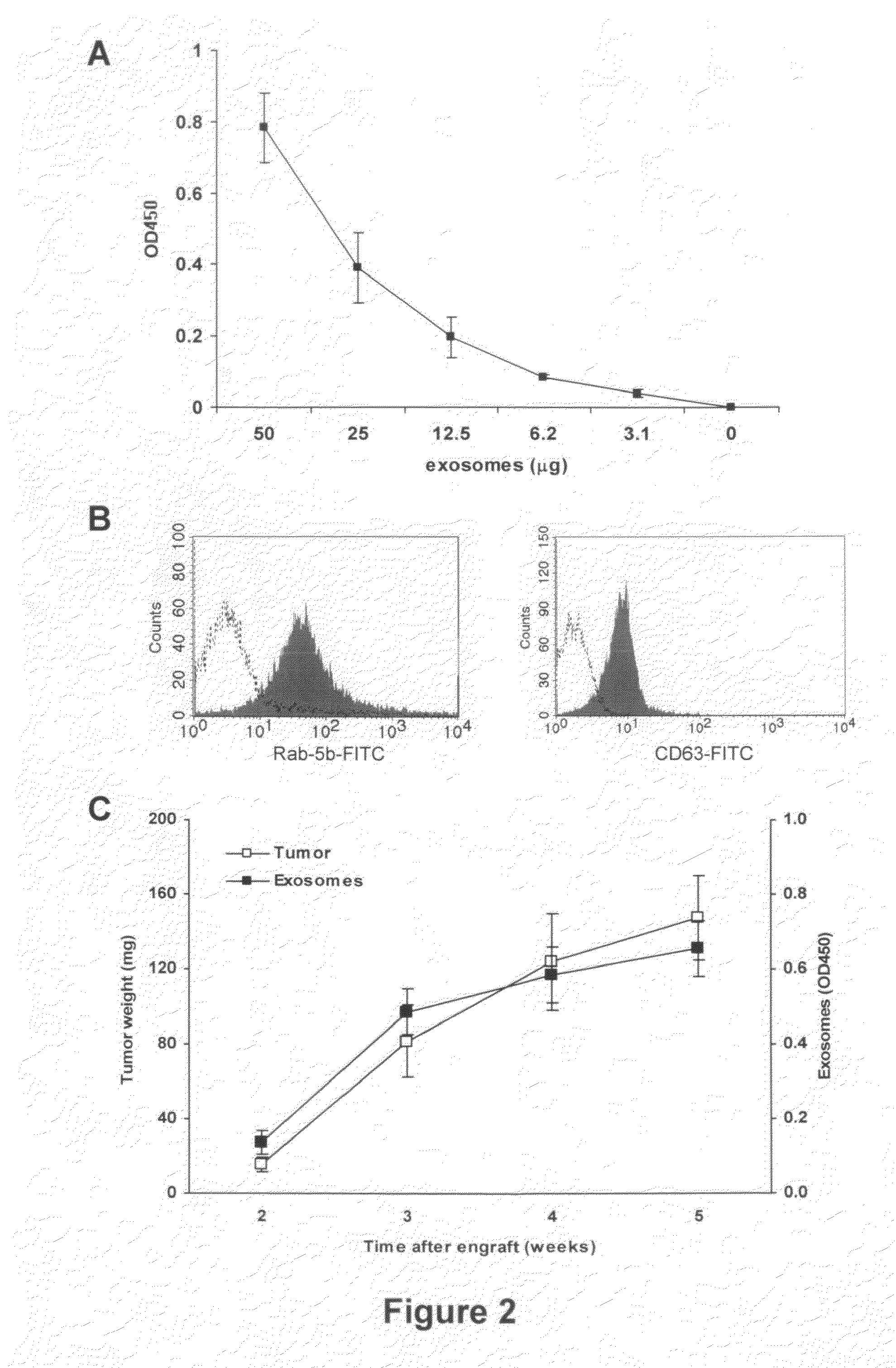Method to measure and characterize microvesicles in the human body fluids
a human body fluid and microvesicle technology, applied in the field of cancer diagnosis, can solve the problems of no prior art on a method and low efficiency of currently available methods for obtaining exosomes, and achieve the effects of low efficiency, diagnosis and follow-up, and simple and reliabl
- Summary
- Abstract
- Description
- Claims
- Application Information
AI Technical Summary
Benefits of technology
Problems solved by technology
Method used
Image
Examples
example 1
1. Sources of Exosomes
A. Cell Culture Supernatants
[0043]We used two types of human tumor cell lines, i.e. melanoma and colon carcinoma. MeI 501 and MeI BS are two metastatic melanoma cell lines obtained from melanoma lesions of patients, surgically resected (Istituto Nazionale dei Tumori, Milan, Italy). We also used two colorectal carcinoma cell lines Colo206 (generated from liver metastasis of colorectal cancer patient) and 1869 col (provided by Dr. Maccalli, Istituto Superiore di Sanita′). All cell lines were cultured in RPMI 1640 medium supplemented with 100 IU / ml penicillin, 100 μg / ml streptomycin (Gibco), 2 mM glutamine I(Gibco) and 10% fetal calf serum (FCS) (Invitrogen, Milan, Italy). Human monocytes-derived macrophages (MDM) were obtained from buffy coats of healthy blood donors using CD14 magnetic beads (Milteny Biotec, Germany) and GM-CSF (500 U / ml) for 5 days in culture.
B. Human Tumor SCID-Mouse Plasma
[0044]CB.17 SCID / SCID female mice (Harlan, S. Pietro al Natisone, Italy...
example 2
ExoTest Provides Quantification of Exosomes Present in Cell Culture Preparations and has Higher Sensitivity for Exosome Protein Detection than Western Blot Analysis
[0052]Culture supernatants of melanoma and colon carcinoma cell lines were processed following the standard procedure to obtain purified exosomes as described above. The sandwich ELISA set up to detect exosomes (ExoTest, see FIG. 1A) was performed on exosome preparations obtained from cell culture supernatants by differential centrifugation. ExoTest was able to provide a quantification of the exosomes present in the cell culture supernatants, being CD63+ exosomes detectable in dose-dependent manner (FIG. 1B). Negative controls, represented by fractions derived from pellet obtained after the 10 000 g centrifugation, exosomes purified from cell culture medium alone and by only secondary antibody resulted in a barely measurable optical density (OD=0.07+ / −0.01). Intra- and inter-test variability were calculated on six replica...
example 3
Comparison of the Results of Qualification and Quantification of In Vivo Exosome Preparation of SCID Mice Engrafted with Human Tumors by FACs, WB and ExoTest
[0054]In order to verify the possibility of detecting human tumor-derived exosomes in vivo by using ExoTest, we first performed experiments in which human melanoma (Me501) and colon carcinoma cell lines were injected subcutaneously in SCID mice. In the first experiments, plasma samples obtained at sacrifice from SCID mice carrying engrafted tumors (100-500 mg) were subjected to the exosome purification procedure. As for the exosomes purified from cell culture supernatants, also exosomes purified from mice plasma were clearly and specifically detectable by ExoTest (FIG. 2A) and FACS (FIG. 2B). Exosome preparations obtained from plasma of control SCID mice (not engrafted with human tumors) resulted in background optical densities comparable to the blank samples (OD=0.08±0.03), thus suggesting absence of exosomes in the immunocompr...
PUM
 Login to View More
Login to View More Abstract
Description
Claims
Application Information
 Login to View More
Login to View More - R&D
- Intellectual Property
- Life Sciences
- Materials
- Tech Scout
- Unparalleled Data Quality
- Higher Quality Content
- 60% Fewer Hallucinations
Browse by: Latest US Patents, China's latest patents, Technical Efficacy Thesaurus, Application Domain, Technology Topic, Popular Technical Reports.
© 2025 PatSnap. All rights reserved.Legal|Privacy policy|Modern Slavery Act Transparency Statement|Sitemap|About US| Contact US: help@patsnap.com



